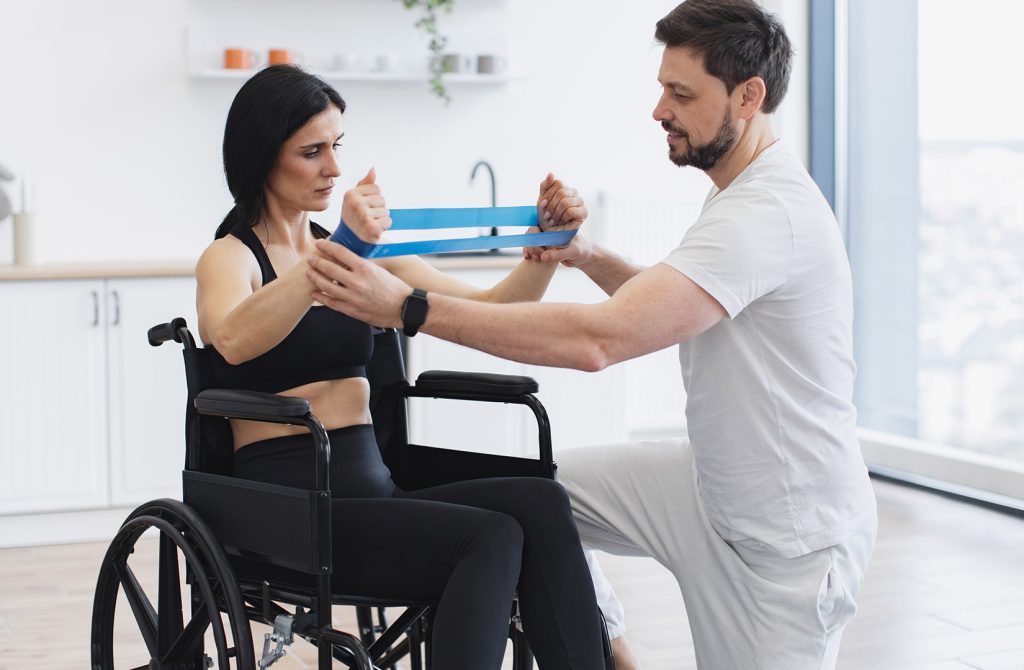Staying active is essential for physical and mental well-being, regardless of whether it’s a case of life-long or limited mobility. Regular exercise can improve circulation, maintain muscle strength, reduce stress, and boost overall health. With a little creativity and adaptation, it’s possible to find activities that are safe, enjoyable, and effective.
Benefits of Staying Active with Limited Mobility
- Improved Circulation: Gentle movement encourages better blood flow, reducing the risk of blood clots and swelling.
- Muscle Strength and Flexibility: Regular activity prevents muscle atrophy and helps maintain range of motion.
- Mental Health Boost: Exercise releases endorphins, which can improve mood and reduce symptoms of anxiety and depression.
- Enhanced Independence: Staying active promotes physical resilience, making daily tasks easier and prolonging independence.
Exercises for Limited Mobility
- Seated Exercises
Seated exercises are ideal for individuals who use wheelchairs or have difficulty standing for long periods. Examples include:
• Arm Raises: Lift your arms straight up and lower them slowly. Use light weights or resistance bands for added intensity.
• Leg Lifts: While seated, extend one leg at a time, holding for a few seconds before lowering it.
• Seated Marching: Alternate lifting your knees while seated to mimic a marching motion.
• Torso Twists: Sit upright and twist your upper body gently to each side. - Stretching and Flexibility Exercises
Stretching improves flexibility, reduces stiffness, and enhances range of motion. Examples include:
• Neck Rolls: Slowly roll your head in a circular motion to relieve tension.
• Shoulder Rolls: Rotate your shoulders forward and backward to loosen tight muscles.
• Side Stretches: Reach one arm overhead and lean to the opposite side, stretching your side muscles. - Strength Training
Maintaining strength is crucial for supporting joints and improving mobility. Consider:
• Resistance Bands: These versatile tools can be used to strengthen arms, legs, and core muscles.
• Hand Exercises: Squeeze a stress ball or use therapy putty to improve hand and wrist strength.
• Weighted Exercises: Use light dumbbells or household items like water bottles for bicep curls and tricep extensions. - Cardiovascular Activities
Cardio exercises can be adapted for limited mobility to improve heart health and endurance. Examples include:
• Arm Cycling: Use a handcycle or seated pedal exerciser for an effective cardio workout.
• Seated Dancing: Move your upper body rhythmically to music for a fun, engaging activity.
• Chair Aerobics: Follow a guided routine that combines arm and leg movements to elevate your heart rate.
Adaptive Sports and Recreational Activities
- Adaptive Yoga
Adaptive yoga focuses on gentle poses, deep breathing, and relaxation techniques, often performed while seated. It enhances flexibility, balance, and mindfulness. - Water-Based Activities
Aquatic exercises are excellent for people with joint pain or reduced mobility. Water provides natural resistance while reducing stress on the joints. Try water walking, gentle swimming, or aqua aerobics. Our range of equipment including Pool and Spa Hoists, Aquatic wheelchairs and pool steps enable accessible access to swimming pools. - Gardening
Gardening can be adapted to suit different mobility levels. Raised garden beds and lightweight tools make it easier to enjoy this therapeutic activity. - Creative Hobbies
Activities like painting, crafting, or playing a musical instrument keep the mind active and offer a sense of accomplishment. These hobbies can also improve fine motor skills.
Tips for Staying Active Safely
- Consult Your Healthcare Provider: Always seek advice from a doctor or physiotherapist before starting a new exercise routine.
- Start Slow: Begin with short sessions and gradually increase the intensity and duration as your endurance improves.
- Listen to Your Body: Stop any activity that causes pain or discomfort and modify exercises as needed.
- Stay Hydrated: Keep water nearby to stay hydrated during exercise.
- Incorporate Assistive Devices: Use mobility aids and assistive technology to fully tap into your full potential. Specialised equipment is designed to support your movements.
Even with limited mobility, staying active is entirely possible and deeply rewarding. Whether it’s gentle stretching, seated exercises, or exploring a new adaptive hobby, these activities can help you maintain physical health, boost mental well-being, and enhance your overall quality of life.
Remember, every little bit of movement counts. Find what works for you, stay consistent, and enjoy the journey to a healthier, happier you.


